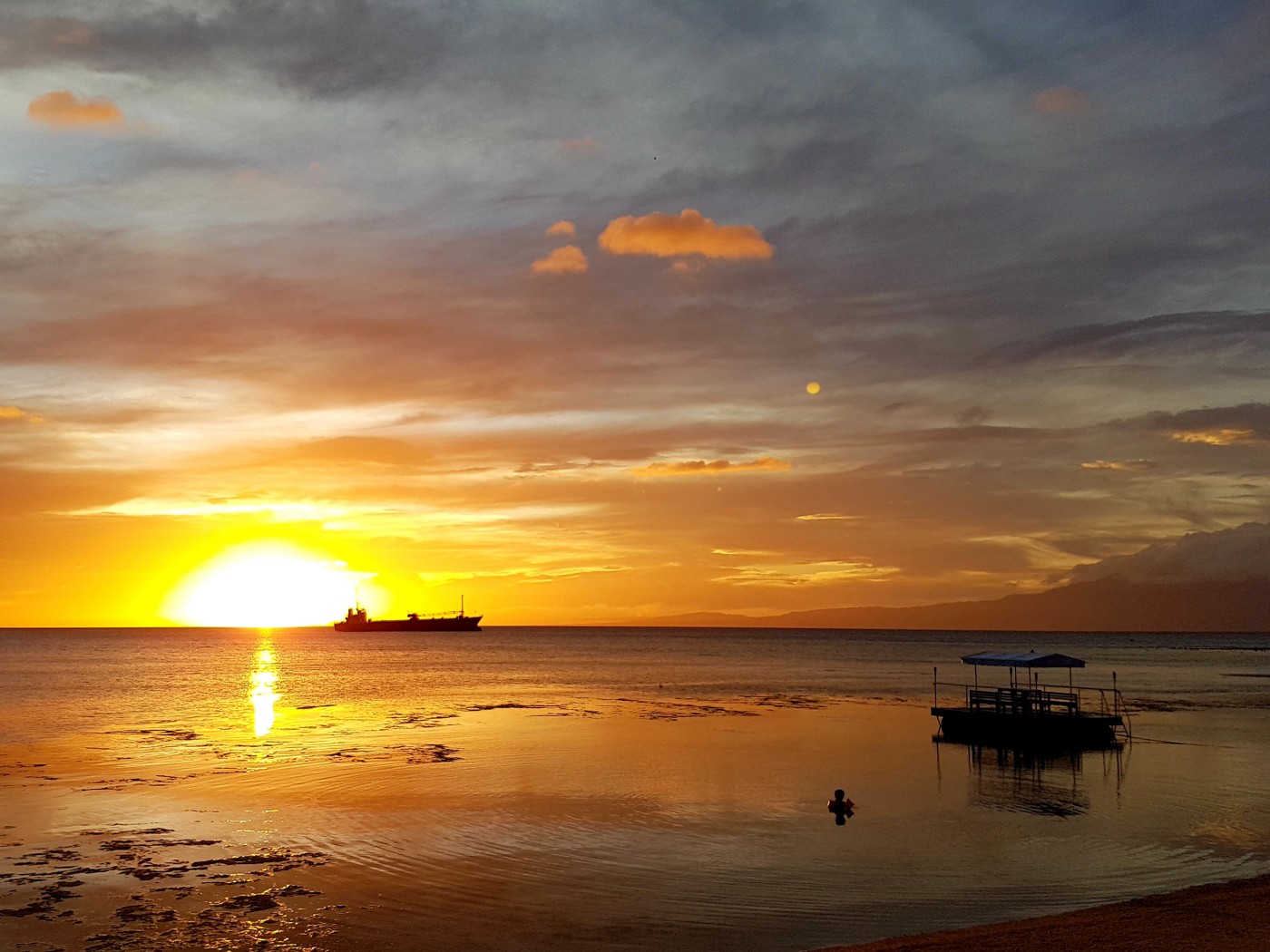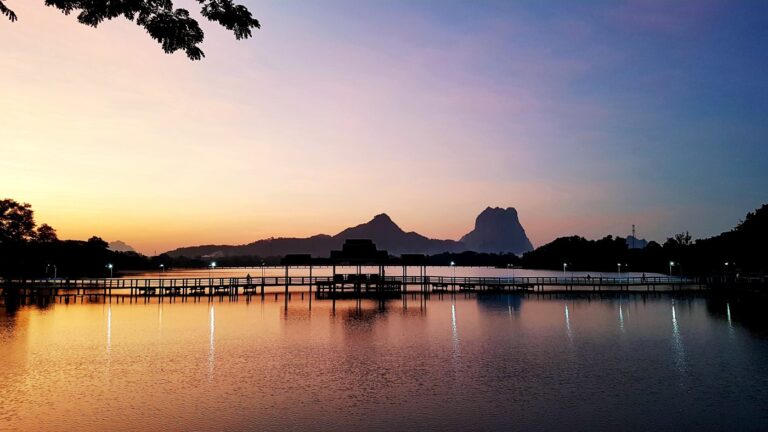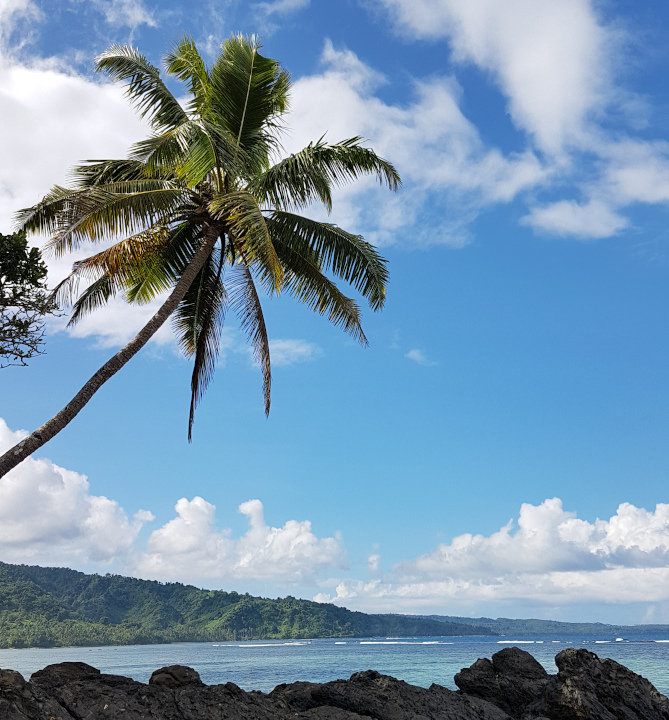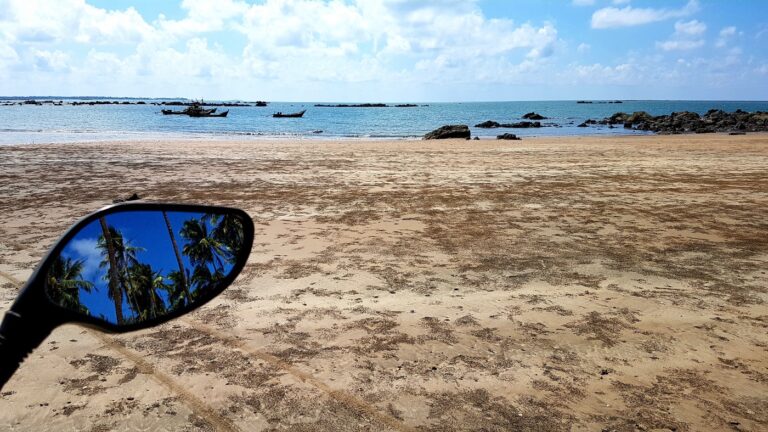(originally posted on Medium on Feb 21, 2020)
The sweet, sweet mix of sun, rain, sandy beaches, colorful corals, giant turtles, and curious fish.
The Philippines are great. The people are very friendly and helpful. The beaches are amazing, and the dive sites awe inspiring. Nonetheless, there are a few points to consider.
But first, here some photos of the nice beaches — a sure reason to go to the Philippines.
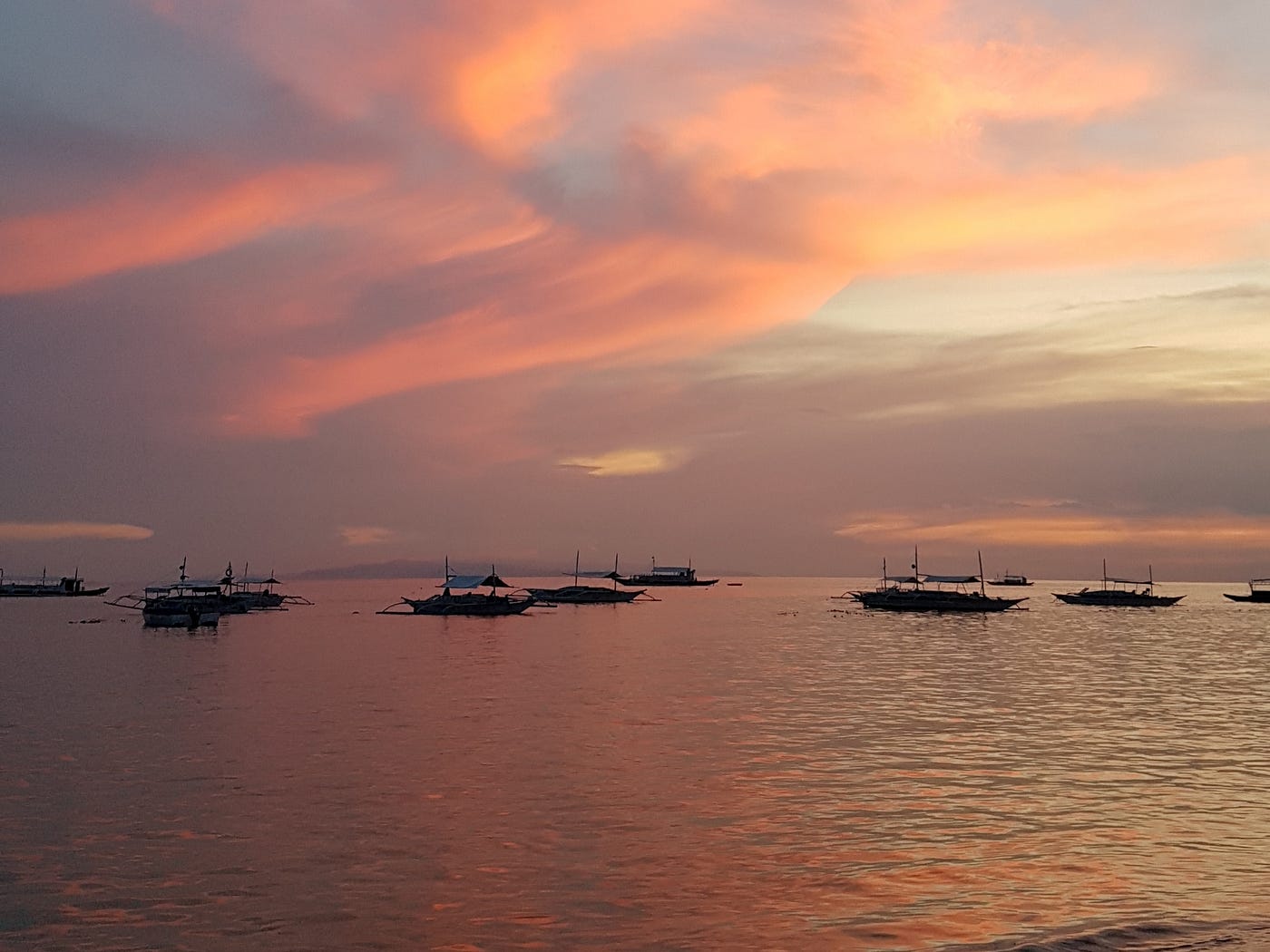
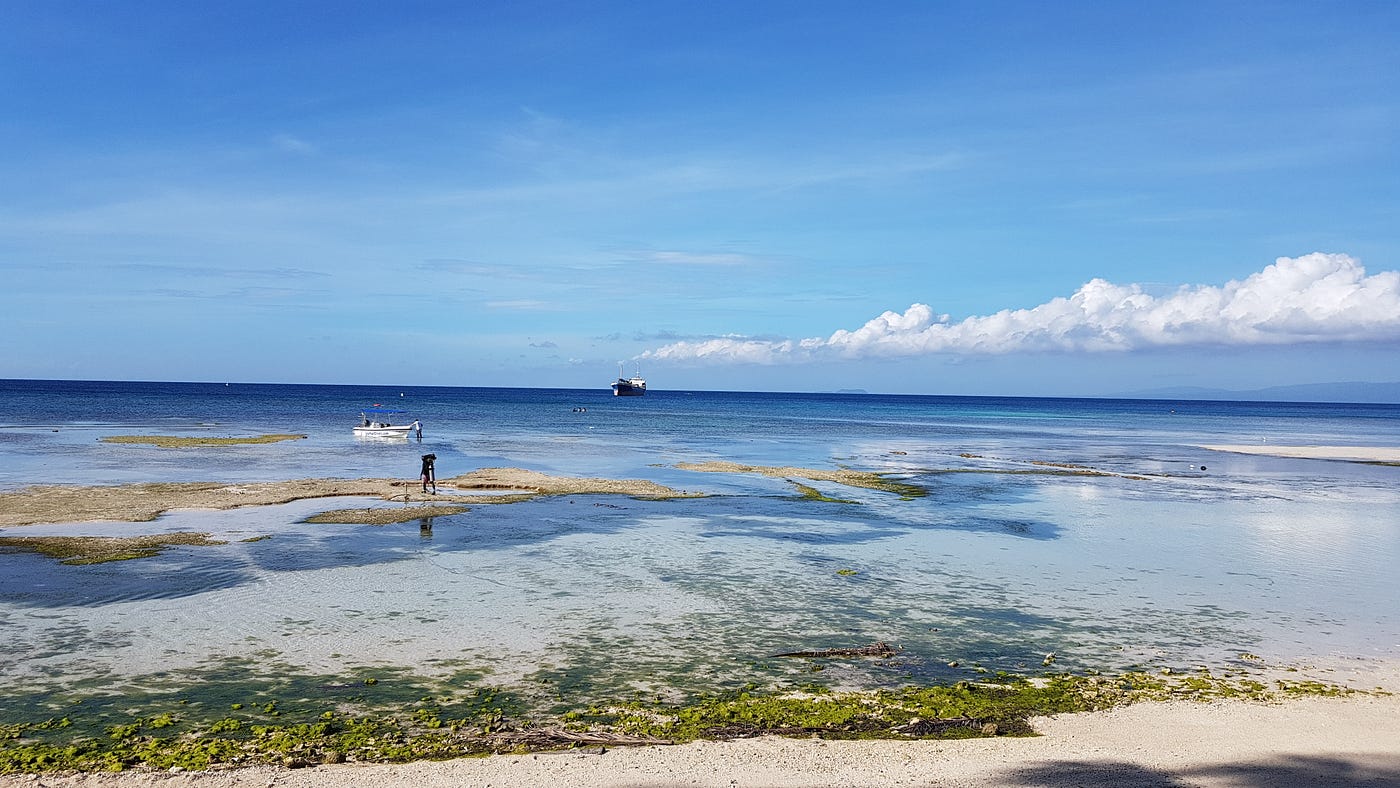







Our itinerary
We arrived in Cebu international airport. From there we headed directly to Tagbilaran on Bohol island. We’ve stayed a few days on Panglao and went scuba diving (Balicasag). Out from Panglao we also went to visit the Chocolate Hills and the tarsier sanctuary on Bohol.

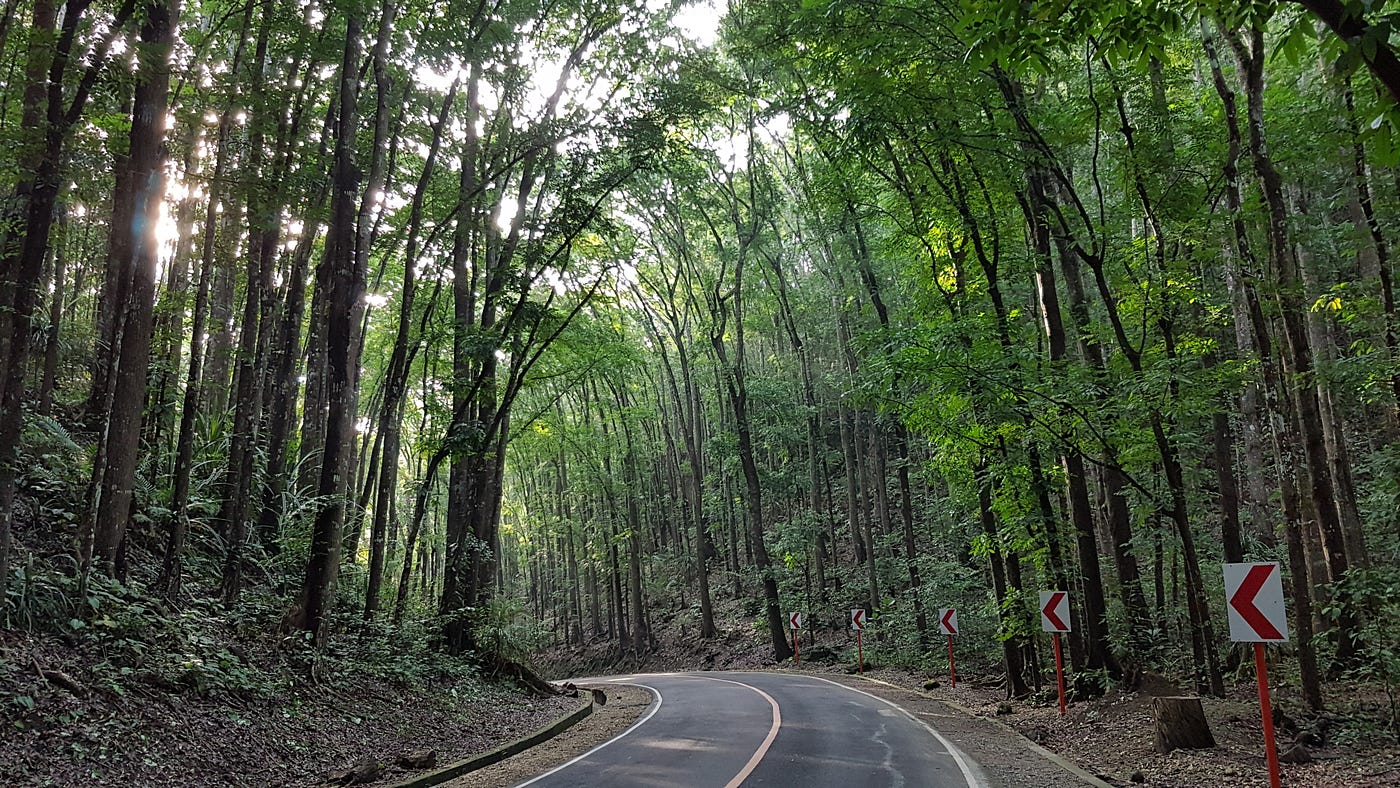

We further went to extend our tourist visa in Tagbilaran (see below). For the trip to see the Chocolate Hills and tarsier sanctuary we rented a scooter for PHP 350 a day. The rest we did by bus and tricycle (and walking of course).

After the journey on Panglao we moved to Siquijor for a week. Here we directly took a scooter at the pier for PHP 250 per day (because we leveraged the long duration). I recommend to negotiate toward such a low price even if you stay for fewer days. The motorbikes on Siquijor are not of the highest standards. And chances are you’ll run into difficulties during your stay (see our vulcanizing experience below). To find a scooter to rent, a group of renters waits just outside the pier, impossible to miss them.
On Siquijor we stayed underwater for the most part. The corals are beautifully colorful, the visibility is nice, and there are many fish. Plus we’ve seen at least one turtle on every dive. Apart from the awesome diving sites, there are some beautiful beaches. Unfortunately, during our stay it was raining quite a lot and often. That’s not a big issue for the dive days during which you’re wet anyway. But it made the days during which we wanted to simply visit the island a bit less enjoyable. Be sure to bring along a raincoat.

After Siquijor we moved back to Bohol. This time we went to Jagna in the south east of the island. Out from Jagna we rented a scooter (PHP 400 per day) and visited some waterfalls, a rice terrace, and Anda beach. If you get to Anda, I highly recommend you check out the coconut burger at Coco Loco, very delicious! Anyway, our main reason to stop by Jagna was to get on the boat to Camiguin.
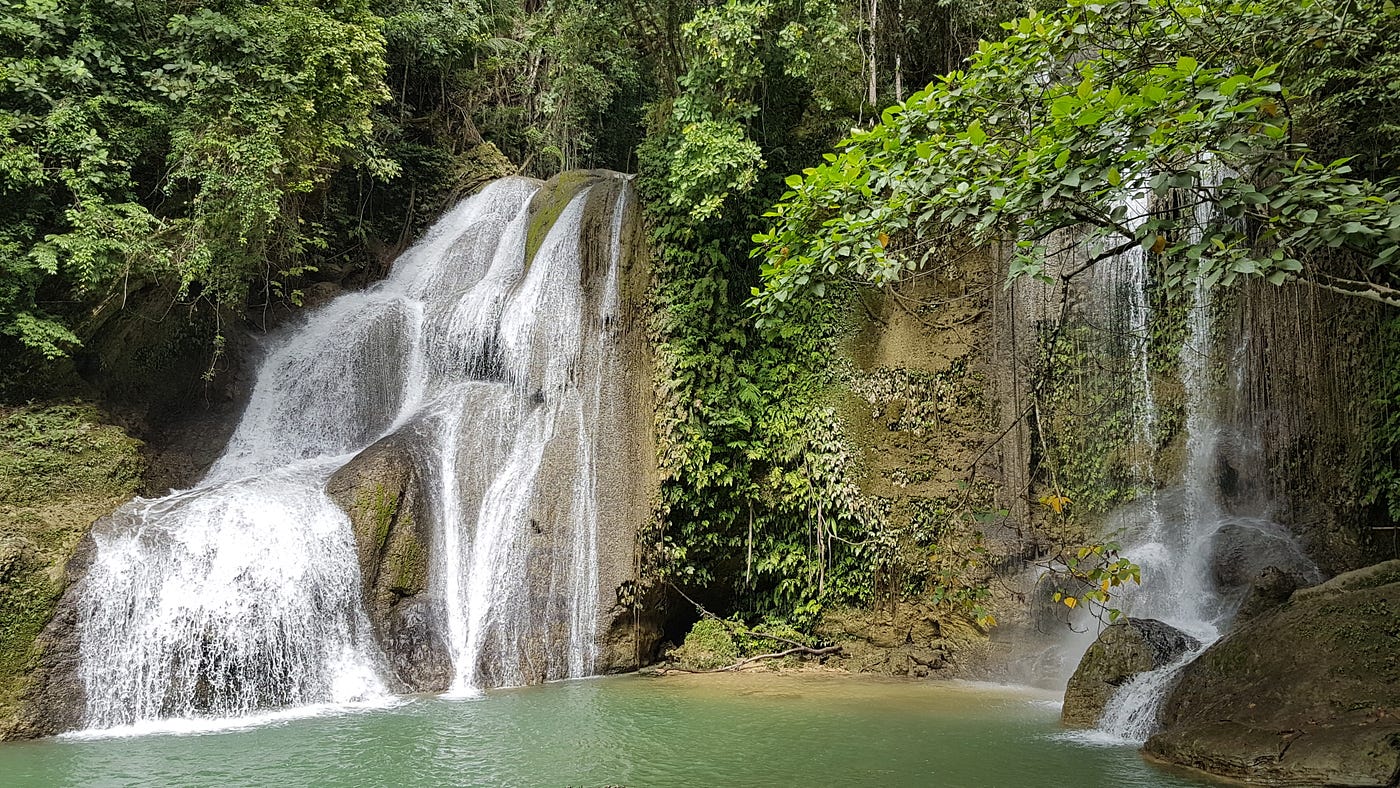
On Camiguin we rented a scooter right from the pier. There are individuals renting out their bikes and they will try to convince you to take their bike and not the one of the guy just next to them as you leave the ferry. We paid PHP 280 per day (negotiated with a duration of one week in mind).
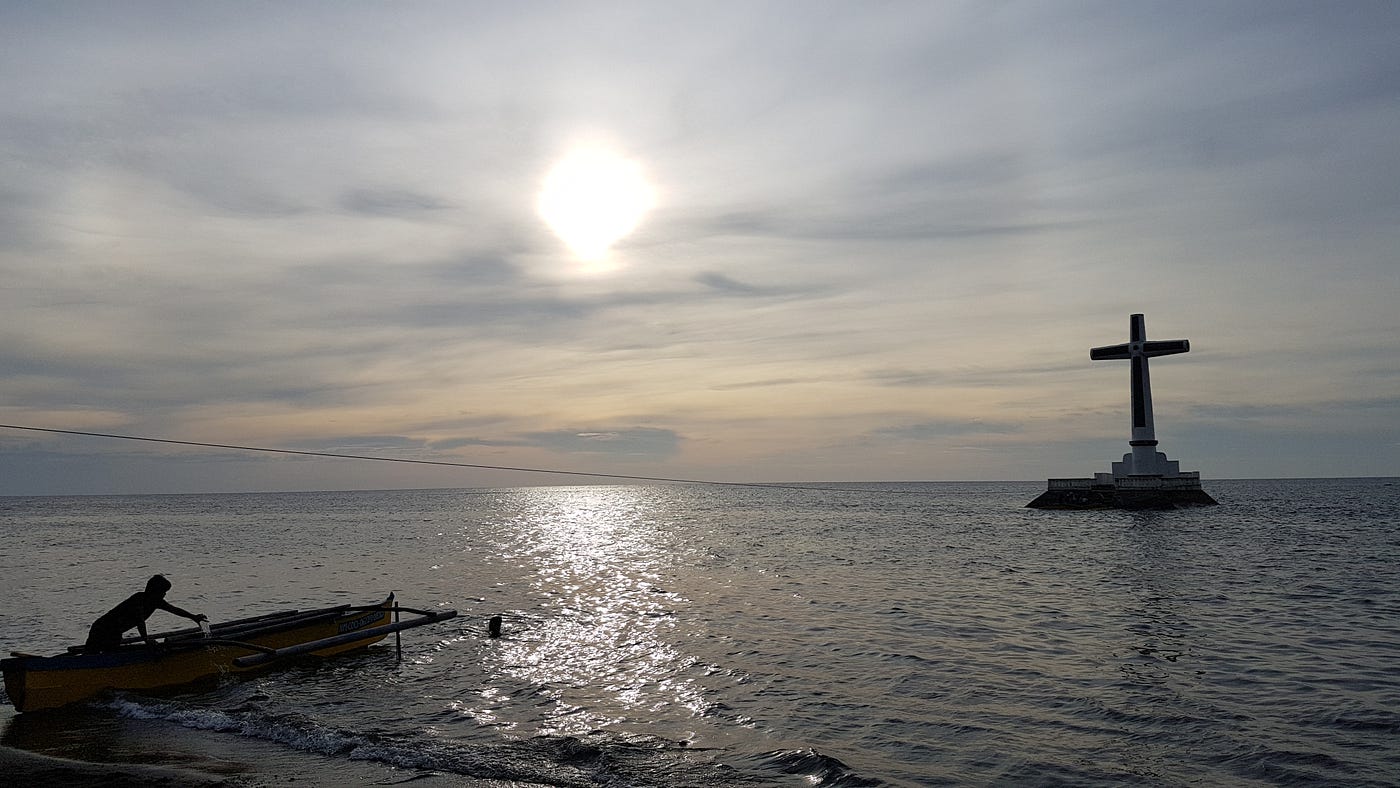
We again went diving a lot on Camiguin. Among the attractions on Camiguin there are two smaller islands to visit (white island and Mantigue). Instead of visiting them during an extra boat trip (which come with a considerable price tag), we combined them with some fun dives. Respectively, we stopped on the island during the break between the dives. Both islands are indeed worth a visit. But I clearly recommend diving there… One of the dive sites on Mantigue is called “Turtle Point”, and yes, there are turtles. But not just the small cute ones. Turtle Point is home to some 2m large Ninja Turtle types! Very impressive.


We intended to leave Camiguin after one week to visit the north of Cebu island, but at that moment a typhoon devastated the intended region. Since we liked Camiguin we decided to extend your stay there some more, and went on some extra dives. For staying on Camiguin, by the way, it is of course possible to take a hotel in Mambajao through booking.com. We however found a homestay close to the pier for white island. It’s worthwhile to walk around a bit to find good deals like that.

After the two weeks on Camiguin we took the ferry back to Bohol, got on a bus to reach Tagbilaran Integrated Bus Terminal (IBT), took a tricycle to the pier, and finished the day with a ferry ride to Cebu city. We used two days in Cebu to withdraw the fee-free PHP 40000 limit at HSBC, and to stock up on some items that we found lacking in our inventory — like, in hindsight it was a real pity not to have a GoPro along with us to document all the amazing dive sites we’ve seen.

From Cebu we then took a flight to Coron (respectively, Busuanga island). Here, we went on an island hopping tour to discover some facets of Coron island. And, of course, we went on some more dives: Coron is known for its WWII wrecks.


We left Coron for El Nido on a 3 days 2 night expedition tour (meaning, island hopping between Coron and Palawan island). There are several different operators who do this expedition, and they all stop at the exact same spots. I found this fact laughable on several occasions: yes, the selected spots are pure paradise. But there are so many other paradise beaches that somehow no one stops at … and then all people go snorkeling in the same bay, which is hence covered by a thick sun cream film because snorkelers don’t know any better than yo apply it just before entering the water …
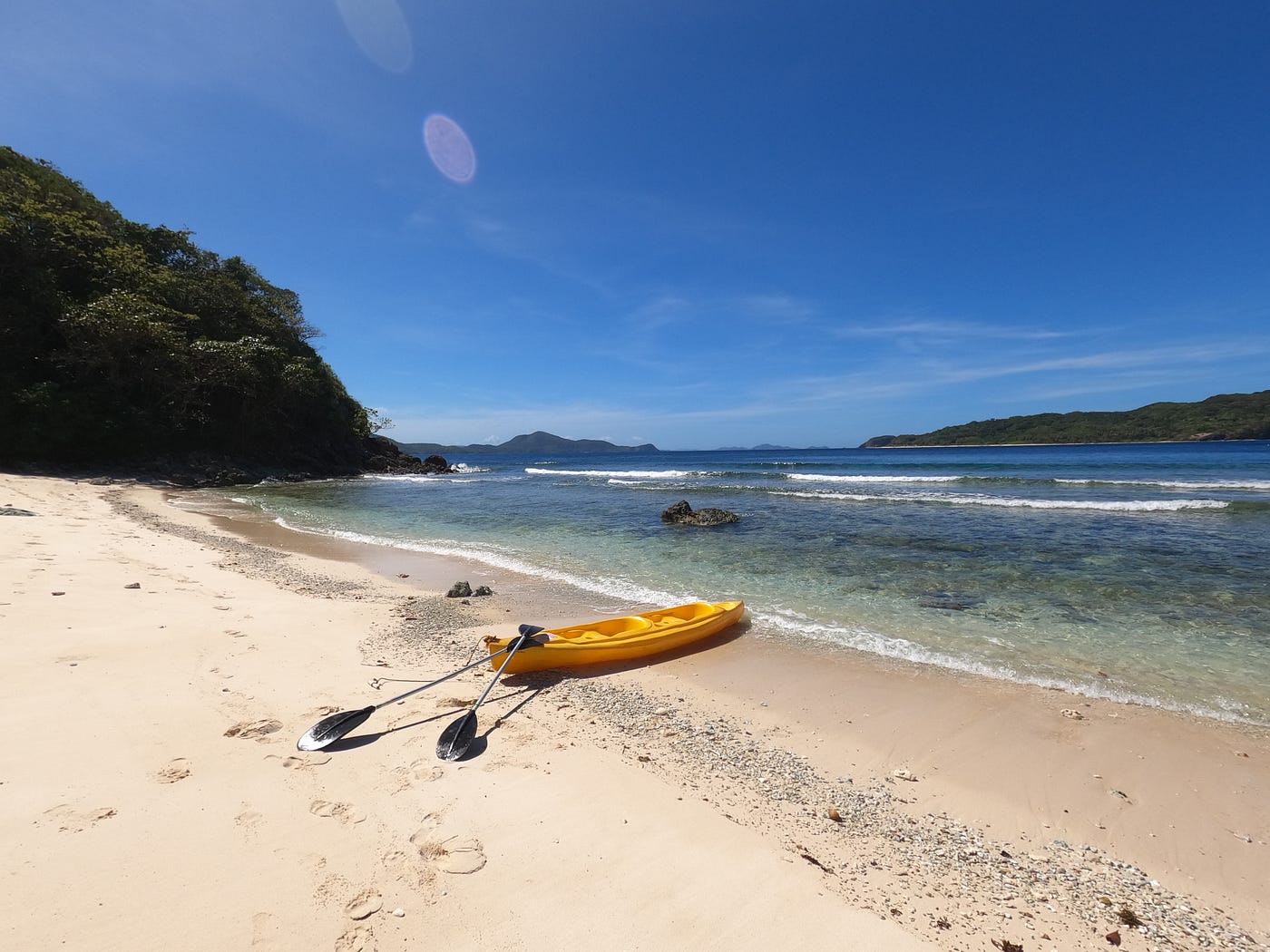


Anyway, once arrived on Palawan we stayed only one night in El Nido before moving on. In our opinion El Nido is a clear victim of its success and thus over-tourism. It most certainly was a nice spot a few years ago. But by now, building upon building just cement its current ugliness.
Instead we retreated in a tent in Sibaltan. Efrena’s beach camping provides an interesting atmosphere. You’re far away from anything, and there are fewer than a handful of other tourists on site. Plus, the host family cooks dinner in the sense of a large family meal for all the guests. This brings everyone together and the days are filled with talking with other travelers like we rarely did in other places.
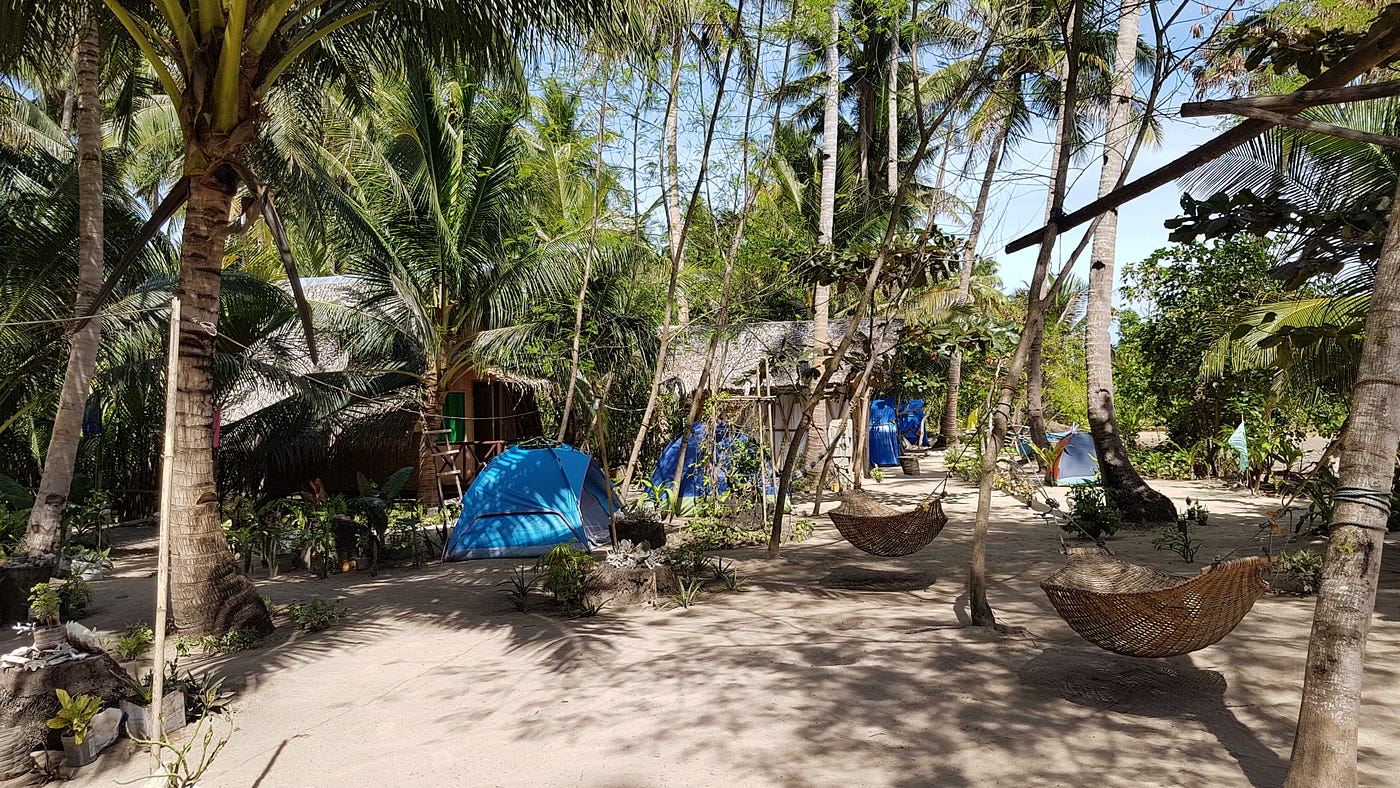
After Sibaltan we got to Port Barton by minivan. Port Barton is apparently developing quickly. So far it still has a very nice beach and is quiet. And since it’s a much larger open space compared to El Nido, it’s probably not going to crumble under mass tourism quite as much as El Nido suffered.

In Port Barton we enjoyed a few quiet days before we left through Puerto Princesa to Manilla, from where we eventually left the country.
For some more ideas to find your itinerary: https://lenaonthemove.com/destinations/philippines/
Siquijor further resource: https://lenaonthemove.com/siquijor-itinerary/
Camiguin further resources: https://camiguinisland.net/
Opinion: Visayas or Palawan? Visayas!
The Philippines have many different regions. During our trip we have visited the Visayas for 4 weeks and Palawan for 2 weeks. There are two points I’d like to make based on this experience. First, I suggest not to plan less than two weeks per region. If you plan a trip to the Philippines of “only” 2-3 weeks, go only to the Visayas or Palawan (or the many other distinct regions). Come back during another trip for the other region(s).
The transit from place to place takes time, plus you have to add a lot of slack to be sure you make it (see below). If you plan a 2 weeks trip and you want to drive through the Visayas and Palawan you’re going to be in transit constantly and/or waiting for a connection at a not so nice place. And you won’t see or experience anything of the Philippines.
The second point is about our personal ranking between the Visayas and Palawan. If you indeed have only 2-3 weeks to visit the Philippines, and you don’t want to be in constant transit, then we recommend the Visayas over Palawan.
Visayas:
+ most bang for your buck
+ beautiful (green) landscape
+ corals colorful and alive
+ underrated!
– rain
Palawan:
+ nice beaches
+ little to no rain
– price (poor quality/price ratio compared to Visayas)
– mosquitos
– overrated!
About the mosquitos: On Bohol and Siquijor we didn’t encounter any mosquitos. Once on Camiguin we again found some — respectively, they found us. Unfortunately, in the province of Palawan (i.e. Coron, El Nido, Port Barton) the mosquitos are very numerous.
Additionally, in Palawan there are blood sucking sand flies (called “nuk-nuk”). They get active at around sun set. If you’re unlucky and/or too slow to put insect repellent on, they can cover your body like an ant hill. They die as one wipes them off. And since they have zero sense for self preservation, it’s easy to do so. Yet, by that time it’s already too late and you’re body is going to be decorated by small bumps for the coming days… At least the bites didn’t itch, so there’s that.
Planing and general advice
If you consider to plan something for your stay in the Philippines, consider again. The Philippines are a great place to train your adaptability muscles. No matter how much you plan, there are always some details that you forgot to account for. Sometimes it’s a simple “does this boat go to X?”. For which the answer may be “yes”. Except, you forgot to verify whether it is the boat to X entirely on sea, or whether they will drop you off early and then the last bit is going to be by van. Sometimes it’s about whether the hotel is going to have wifi (with internet) to book the days further on … which is a topic on ts own (see below).
And then there are the natural forces: typhoons, earth quakes, volcanoes. Those are definitely impossible to account for. There are some statistics about the typhoons. But these numbers don’t mean much for the specific case.
In our case, we’ve had the two “expected” typhoons of December: one just before our arrival, and one over Christmas. For the first one we were lucky to have scheduled our entry through Cebu instead of Manila (though that was luck, nothing else). The second turned our plans to go to Bantayan upside down, so that we stayed longer in Camiguin. And then, a few days before leaving through Manila the airport had to close because of a volcano eruption.
Money is another topic of concern. The Philippines are a plastic free country when it comes to payment. There are very few places that accept credit card, and if they do, then with a decent extra fee. At the same time, the bank withdrawals are (mostly*) limited to PHP 10000 per transaction. Given the generally low prices, this limit is reasonable. Except, if you intend to dive, then you suddenly start spending a decent amount on banking fees.
Hence, as you enter the country through Manilla or Cebu it may be worth a trip to HSBC and max out their liberal PHP 40000 limit (even without fee on Philippines side!) before heading out to the islands with smaller limits (and no fee-free HSBC). Apart from HSBC the banks we got our money from (i.e. which accept international cards) were Metrobank and the PNB (Philippine National Bank).
Budget
During our 6 weeks in the Philippines we traveled in backpacker mode and hence with a corresponding budget in mind.
Based on some resources we found online ahead of time, we estimated and oriented ourselves to spend about $33 per person per day. In reality we’ve spent about $30 per person, ignoring the diving.
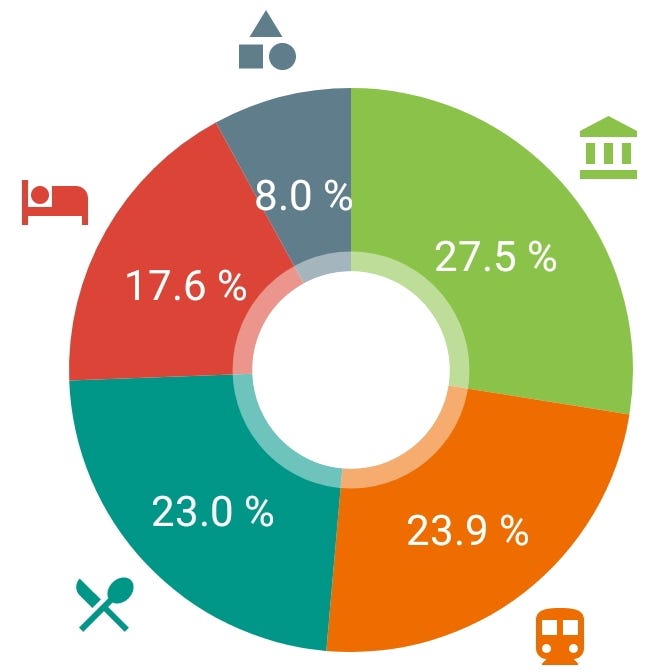
About half of this amount we have spent on food/restaurants and transportation (including the domestic flights). Another quarter is accounted for purely by the 3 day 2 night expedition between Coron and El Nido (which is a mix between food, transport, and activities; assigned the three pillar icon in the image). We knew ahead of time that we’d like to do this kind of expedition and saved up during the rest (i.e. the beginning) of the trip. The last quarter is accounted for by housing and activities (diving not included).
As mentioned, we went on a lot of dives in the Philippines. And rightfully so! The underwater scenery is awesome, and the cost per dive with about $25–30 per dive affordable. Apart from fun dives, we also got our Advanced and even the Rescue Diver certification during this trip.
With all of these diving related expenditures included, the above mentioned budget is dwarfed by the diving; which now makes up 50% of the total.
In other words, I don’t know in how much our spending behavior can be translated for others. On the other hand, during 6 weeks of travel we were able to save 25% of the foreseen budget to then spend that money on a 3 days 2 nights all inclusive trip. From this fact alone I derive that the Philippines leave a lot of room for modularity for backpackers.
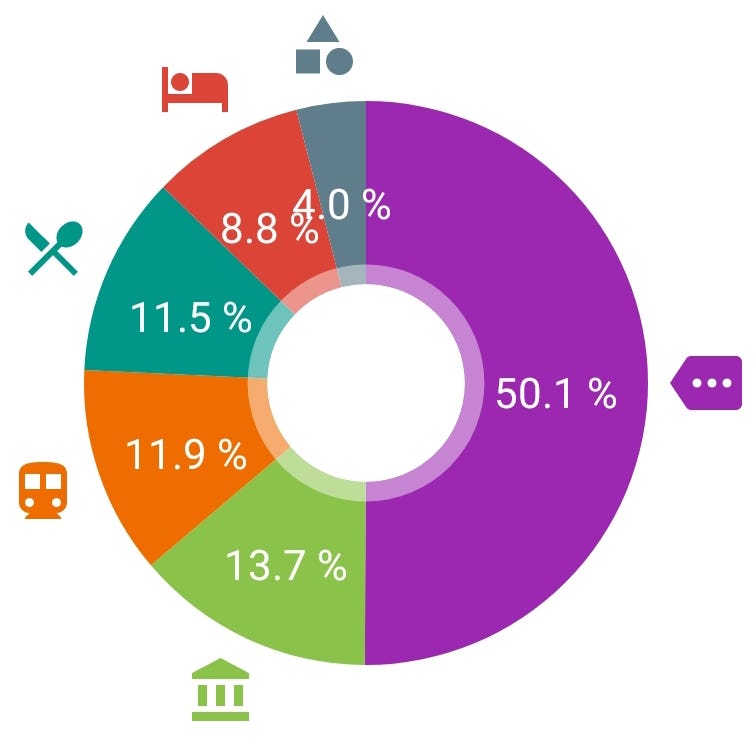
Food
Sugar. When talking about Filipino food, there is one ingredient to rule them all, and that is sugar. Whether sugary sausages, sugary bread, sugary carbonara pasta, sugary wine … sugar is wherever there is a non-expat behind the counter.
On a whole, I was satisfied with the food in the Philippines. I heard a few stories about how “bad” the food in the Philippines is supposed to be. Maybe this anchored me in expecting something significantly inferior than reality, under whose light I now consider the food as better than it actually was. How ever I have to account for my biases, in my memory, I liked the food.

This being said, Filipino food is generally too sweet. When you go to a place where you haven’t been before, do not order the same meal twice over for two people. Diversify the risk. When in an eatery, order each item only once, no matter how small the servings are in that particular place. Once you’ve established that the food is ok, then you can go ahead and order a second serving.
Note also that if you opt for a meal of “western” origin whose recipe contains cream: be wary of the fact that in the Philippines this cream is replaced by condensed milk; which makes it very sweet. If you’re into this kind of things, go ahead. If not, you’ve been warned.
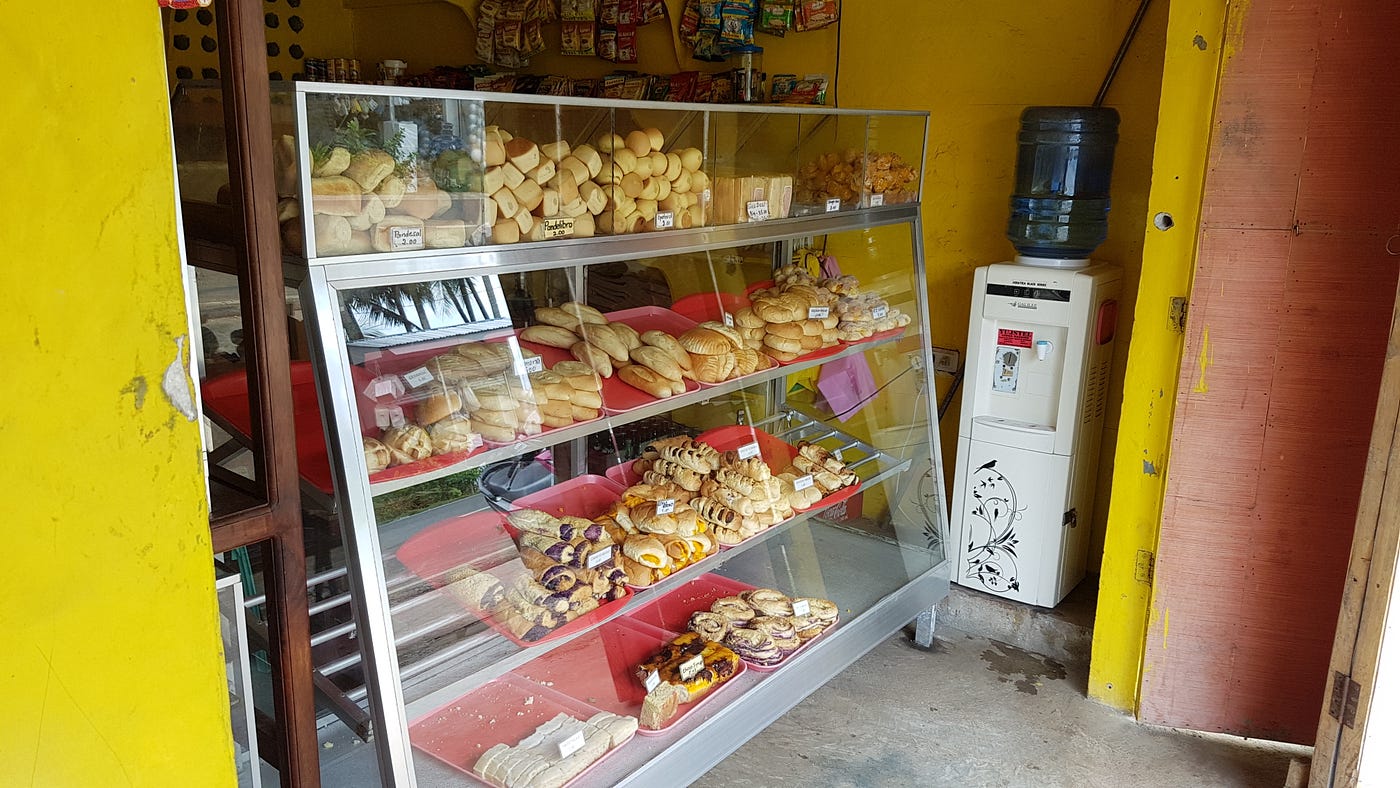
Regarding bread, there are quite some bakeries with decent (albeit sweet) pastries. They are very cheap: usually each piece of pastry is PHP 5 (if you’re in a place catering to foreign tourists, the price may differ). Hence, by buying a few items in a bakery you can compose your own sweet breakfast for significantly less than if you go to a breakfast place.
On Siquijor, I highly recommend the bakery situated between the Luca Loca restaurant and the Pawikan dive resort. Their cinnamon loaf (PHP 35) is amazing.
Many bakeries have a “red pie” on offer. This is “a pie which is red”, according to their helpful response to our inquiry. From what we have found online, it’s a pie made of the left over bread (plus red food coloring, so that their explanation was indeed accurate). Because of this, the taste of the red pie is surprisingly representative of the taste of all their other pastries. Hence, if you’re at a new bakery that you don’t know yet, taste one (don’t order more!) red pie and if you like the taste, buy the other pastries you’re interested in.

There is a second account I have to give in on the bad prejudices on food and that is about the parts of the animals served. In the Philippines when going for a street bbq, it is not uncommon to have chicken heads on a skewer. Or pig heads on display, in a local market.

Internet and WIFI
The wifi situation is generally bad. There are many places (hotel/hostel/restaurant) that advertise with “free wifi”. And while the wifi indeed exists, often there is no internet behind it. Sometimes the internet connection is a question of how many people try to connect. Which, in a restaurant usually means more than one … which thus saturates the connection.
In some places they have a “Piso Wifi”. These are small wifi stations, the size of a bouncing balls dispenser. For 1 Peso you get a voucher that gives you access to 5 min of wifi, PHP 5 = 30 min, etc. Once you’re connected to the wifi you have to navigate to 10.0.0.1, enter the voucher code, and you’re online.


Except, you’re not really online. The four employees working at the Piso Wifi place are connected to the machine already … which means the connection is saturated. Not a big deal, they reimbursed us and we stayed without wifi.
So, if you need wifi for some reason, and this is why you chose a certain restaurant over another: check the connection first, and then order. If you go there for the food and wifi would be cool to have but no must, go ahead and order anyway. Just know that if there are other guests already (a signal for good food) then the wifi won’t work.
For another time in the Philippines, a local SIM card would be useful.
People
The Filipino people are very friendly and helpful. If you have a question about something don’t hesitate to ask. Even the tricycle drivers are helpful in finding the bus station, even though this means you’re not going with them (and they don’t get your money).
When exiting the airport of Cebu after arriving in the country, there are several taxis waiting for the new tourists. I was immediately expecting to find the same kinds of vultures as in other parts of asia (see my reflections on travelling Laos). But to our surprise, as we mentioned “too expensive” to the first offer that we got (from the taxi crew in yellow uniforms), the lady told us without hesitation “oh, well, then take their taxi over there, they’re cheaper”.
While Filipinos want to help, if they don’t know how they aren’t willing to say “I don’t know” (typically asian…). Hence, yes ask. But plan in some extra time to be able to confirm the information given.
In Camiguin we’ve had a somewhat lengthy conversation with our host. Most of the year he’s on big freighter boats. Tough work! In the conversation he kind of was getting at the point that we’re very lucky to be able to travel the world on our own terms (very true!).
Within his view, he had several misconceptions about how the work life in Europe actually is. For example, he insisted that in Europe the government would go out of its way to find a job for someone losing theirs; which thus would give significant security to the employees.
“In the Philippines there is no such security. If you lose your job, you’re on your own. That’s why a Filipino always says ‘yes’ when the boss wants something. Even if you know it can’t be done. Filipinos don’t have the luxury to say ‘no’ and get fired.”
As mentioned earlier, the Philippines are a great place to train your adaptability muscles. And if at times you really need to know something, ask twice and in different ways — to at least check whether the person knows what he or she is answering about.
Waste treatment
A quick note and sort of follow-up on my remarks on Myanmar: the Philippines are very clean and they seem to separate their waste.

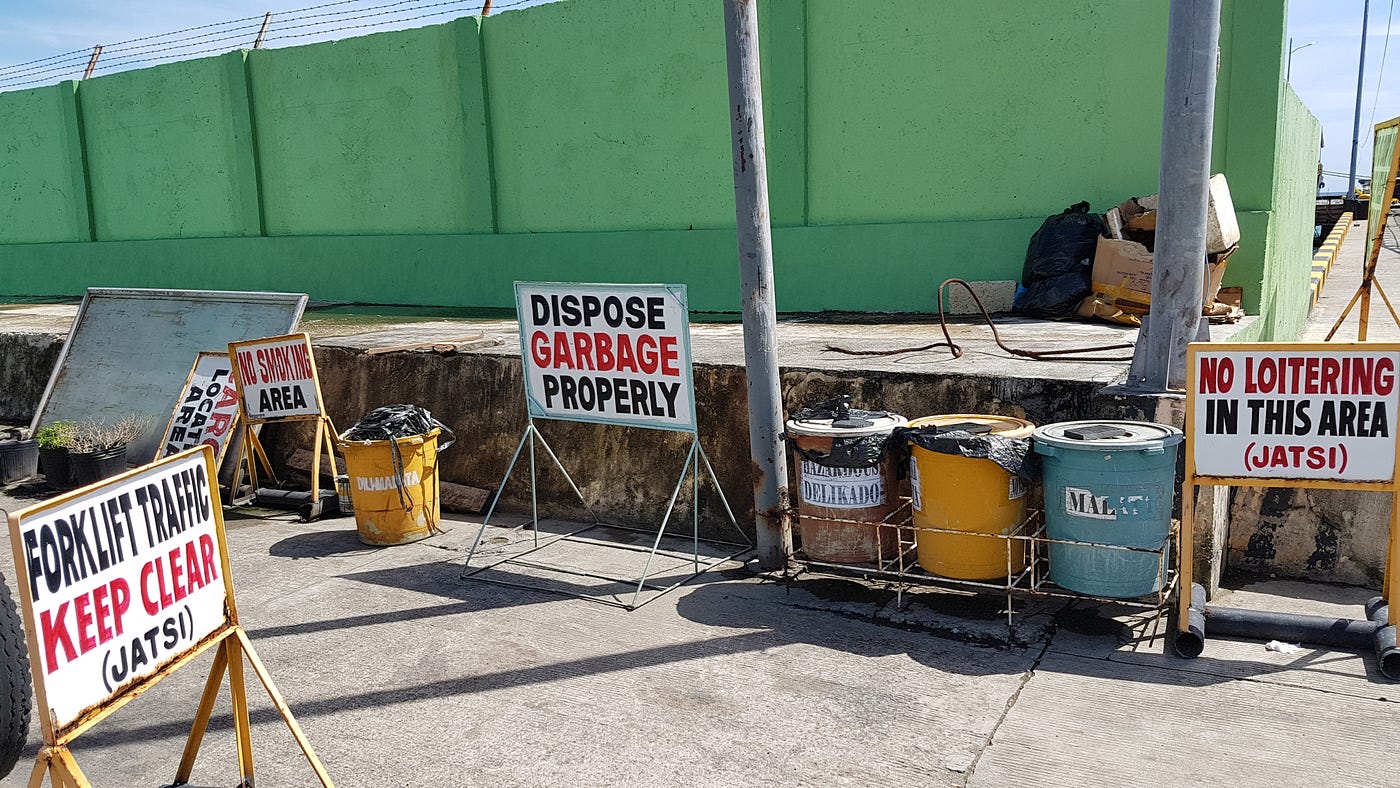
We’ve seen several places with different waste bins for the different waste types. Seeing the clean environment and this waste separation was a pleasant surprise.
Vulcanizing shops and Siquijor’s motorbikes
“Vulcanizing shop” is a sign you’re going to see all over the place on Filipino roads. And it’s worth remembering the signs when passing them on a scooter: “vulcanizing” refers to repairing a motor bike (or in some places they even accept buses). And knowing this ahead of time before getting to the Philippines might be useful.

If you drive a scooter in the Philippines for long enough, chances are you’re going to experience the art of vulcanizing. In our case, this was while on Siquijor. We’ve rented a bike for 7 days straight at the Larena harbor. The bike looked ok, like they always do. Except, after a few days we noticed that our back wheel started to lose air.
We assumed we could get air at a fuel station. There were no stations where we were at that moment, so we decided to have dinner first. On the way back we knew we’d drive past a station. Except, once at the fuel station, they told us to look for a “vulcanizing shop” instead.
We’ve seen several of those shops throughout our Philippines travel up until then. But we’ve never taken the time to ask what they were. If we had known! They’re clearly more frequent than fuel stations, we could have stopped at one way before getting to the fuel station!
Anyway, we didn’t. And by the time we were at the fuel station to ask for air after dinner, the vucanizing shops were already closed. So we had to wait for the next morning. By that time also the remaining air was gone. Driving a scooter without air is dangerous as the bike wants to slip away all the time, even at very very low speed. Additionally, after a while, the valve broke out of the tube in the wheel.

After a while on the road at very low speed I reached the closest vulcanizing shop. They explained me that the valve broke out of the tube and they could no longer just pump in some more air. I had to change the tube. Fine, how much? Well, the vulcanizing shop can do the vulcanizing, but they don’t sell spare parts. Instead, I had to go across the street, buy a new tube, then come back, and then we could fix the wheel.
All in all everything was simple and they worked efficiently, once I understood the process. About 20min later I was back on the road at normal speed.
Now with a brand new tube on the wheel we should have our peace for the rest of our journey, one might think. But one would be wrong. Three days later, we stopped at an ATM, got some money, and the few minutes later as we hopped back on the scooter, the back wheel went flat.
Just like that. This time we reacted faster and got immediately to a vulcanizing shop — we essentially broke down right in front of one… The guys removed the tube (with the valve still intact), found the hole, put a special paste on it, heat cured it, bubble tested it underwater, and handed us the fixed scooter back.

During this vulcanizing there were about three motorbikes who stopped by to get some more air in their wheels (without the need to fix holes, though). The bike wheels on Siquijor appear not to be the most reliable. At the same time, that’s why there are so many vulcanizing shops around to help you if need be.
The new tube was PHP 145, the vulcanizing PHP 50 per time. Oh, and when we returned the scooter, we tried to explain that there is something wrong with the wheel: two tubes damaged within such short a time shouldn’t be normal. But the guy just looked at us as if we were speaking chinese, looked at the wheel, then waved us away “what problem? The wheel is whole!”. He of course also didn’t want to reimburse us. After all “there is no problem, see(?!): the wheel is full of air!”.
Scuba diving
The dive sites are unbelievable. In the visayas, the corals were still very much intact, alive, and colorful. From Panglao (Alona beach) a trip to Balicasag promises an absolutely beautiful view. In Siquijor everything is beautiful, from the reef dives in front of San Juan (/Maite/Tubud) to the wall dives in Tambisan. In Camiguin the corals are again beautiful (those around old vulcano and sunken cemetery are particularly colorful), but the visibility was often less than 10m.
The Visayas dives were very kind with us regarding turtle sightings. We’ve seen at least one turtle on every dive. Another local favorite are the many puffer fish. From Giant Puffers, to large yellow ones resembling an over ripe mango, to the cute little Saddled Tobys.
Concerning turtles, the Turtle Point on Mantigue off Camiguin is an absolute must-see. There, giant turtles hang around that are in the range of 2m!
Sadly, in Palawan, the majority of the corals are bleached out. There, Coron has some wrecks to show for. For some reason all dive shops in Coron tour inside the wrecks, even without an advanced wreck diver certification. This may either sound awesome, or flat out terrifying.
In reality, the wrecks appear to be relatively easy to penetrate. Nonetheless, good buoyancy is a needed, as well as a calm head. Some of the wrecks feel like a popular and well visited museum. There are so many divers at the same time that it is challenging to find the right group again after passing an obstacle.
Dive centers:
Here the centers we dived with. The experiences were pleasant and I can recommend them.
Bohol/Panglao: Bohol divers [https://www.alonaboholdiversclub.com/]
Siquijor: Sea Pearl Divers [http://seapearldivers.com/]
Camiguin: Soul Divers [https://www.camiguinsouldivers.com/] (not only for Mantigue, they also offer trips to White Island etc and are still lower on price than other centers)
Coron: French Kiss Divers [https://m.facebook.com/French-Kiss-Divers-Coron-556086381394307/]
Two resources we found useful for diving:
https://plongeurbaroudeur.com/en/2019/09/19/meiileure-plongee-best-diving-philippines/
Transport
The transportation between places is easy and well developed. Even for between islands. Respectively, it’s easy only once you’re at the bus station or at the pier. Getting the information on what bus station or which pier, information about what time and on which days, that is the hard part. The following information was valid Dec/Jan 2019/2020.
Cebu -> Tagbilaran by ferry
You can buy a ticket at the pier up until a few moments before the ferry leaves. Oceanjet is the most convenient option as they have approximately hourly connections starting at 5h10 until 18h40. The ride takes 2h and costs PHP 500 per person.
Further information:
https://portsandferries.com/oceanjet-cebu-tagbilaran-ferry-schedules/
https://escapemanila.com/2017/03/cebu-to-tagbilaran-ferry-schedule-and-fare.html
https://jontotheworld.com/cebu-to-tagbilaran-bohol-ferry/
Bohol/Panglao <-> Siquijor
OceanJet offers one trip daily, which takes 1h20. The ticket price is PHP700 per person, including one hand luggage. The other fees depend on the direction. The ferry leaves
10:20am from Tagbilaran (Bohol),
12:30pm from Larena (Siquijor).
The price differs slightly for the two directions.
Tagbilaran -> Larena
carry on luggage fee (per person/piece): PHP100
Terminal fee (per person): PHP20
= total of PHP 820 per person
Larena -> Tagbilaran
carry on luggage fee: PHP45
Terminal fee: PHP17
= total of PHP 762 pp
Further information:
https://portsandferries.com/oceanjet-tagbilaran-larena-ferry-schedules/
Bohol <-> Camiguin
Bus and ferry via Tagbilaran:
Tagbilaran to Jagna Port by Bus
There are several buses at various prices. Ask around at the Tagbilaran Integrated Bus Terminal (IBT). You’ll pay in the bus.
- Duration: 2 hours
- Costs: PHP ~100 per person
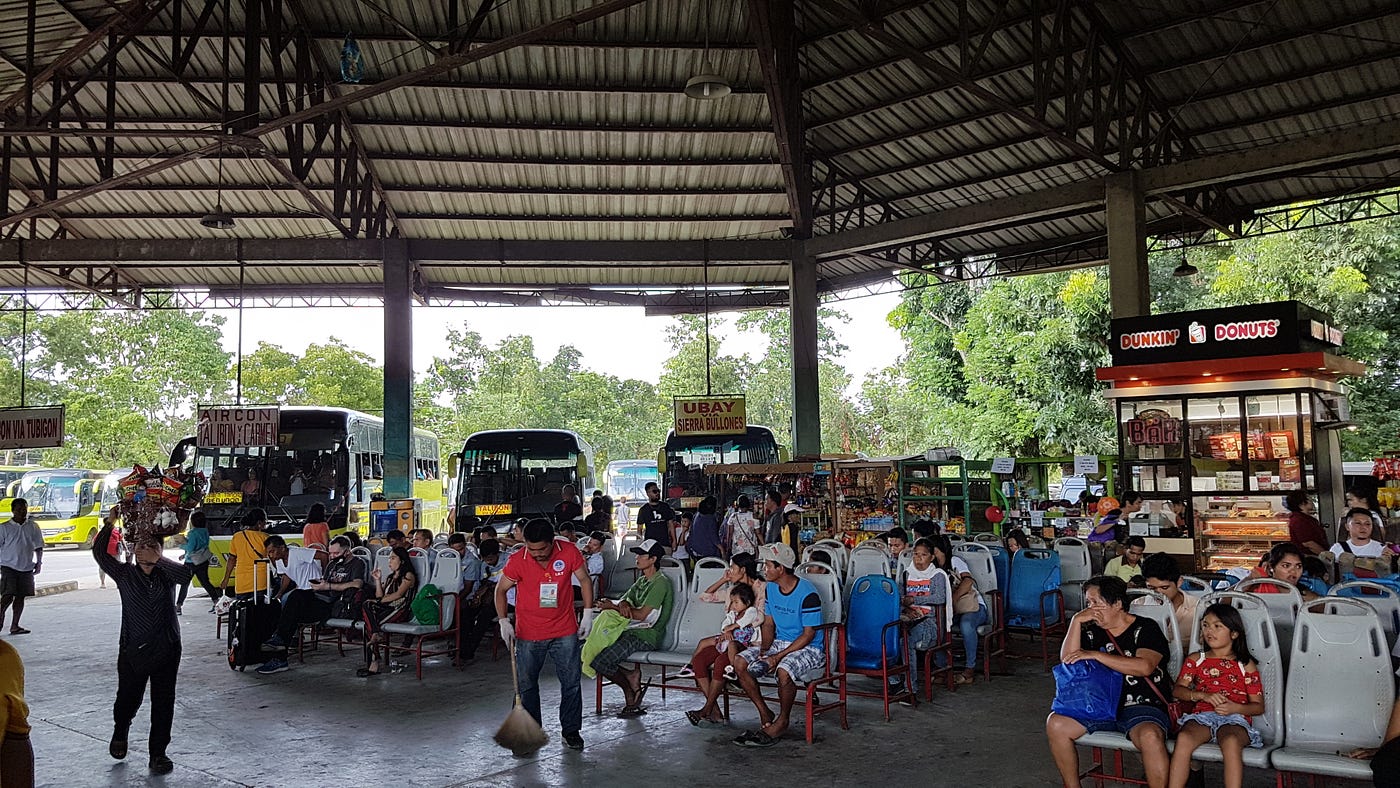
Jagna Port to Camiguin by Ferry
There is one daily trip which takes 4h. The ticket you can buy at the pier which is situated behind the McDonald’s. The ticket office is (Dec 2019) a small wooden hut with the the Super Shuttle RoRo logo on it. Next to it there is a somewhat larger ticket office to go to Mindanao (the big island in the south which foreign governments advise not to go to in the Philippines). The ticket office in Jagna opens at 8am (unless it’s Christmas, see below). In Camiguin we bought our return ticket the day before, also at the pier.
- Duration: 4 hours
- Costs: PHP 425 per person
additional fees to leave Jagna (nothing for the other direction):- service fee for the town or something: PHP 10pp
- terminal fee: PHP 12pp
- Bohol to Camiguin leaves Jagna at 13h00
- Camiguin to Bohol leaves Balbagon at 08h00
While the tickets can be bought conveniently on site without much planning needed, there may be some dates in the year when this laid back attitude won’t work. One of those dates is around Christmas, the other is apparently around Eastern. We experienced the Christmas craze, so that’s what I’m going to tell you about.
The ferry from and to Camiguin is a roll-on roll-off (RORO) boat concerned with transporting vehicles … and some people along the way. There are (status Dec 2019) only 230 passenger seats available. During most of the year, that’s plenty enough. Camiguin is still slightly off the beaten path and few people go there. But, then there is Christmas. And if you want to bring your whole family (back) to Camiguin, and all other Filipinos want to do the same, and when a family consists of 20 members, then, well, then these 230 seats are just not enough.
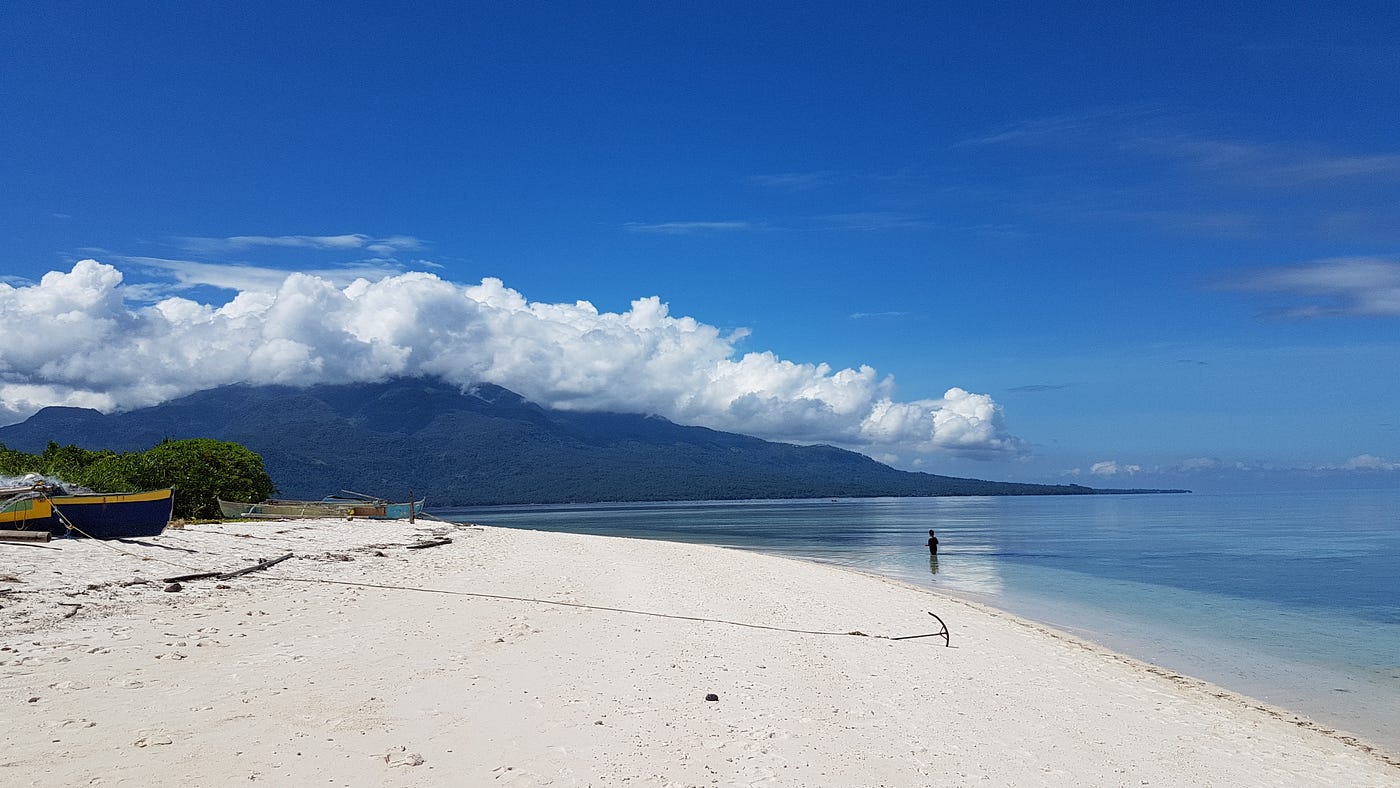
Of these 230 tickets, 30 are available from the Super Shuttle RoRo website. The rest have to be purchased through the ticket office at the pier. Around Christmas it’s impossible to buy a ticket for day ahead of time. All the tickets sold for a given day have to be purchased on that day on site. To purchase a ticket you need to pay, of course, but you also need to put the names of the passengers on a list. The list asks for the passport number of each passenger, but no one filled that out (again, status Dec 2019), and no one cared; so, all you need is to know your name (and those of your extended family or whoever you travel with).
The ticket office opens at 8am, officially. But, the first day I tried to get our tickets, I arrived at about 7:50, and there were already all tickets gone. How is that possible. Well, as I was told (I guess half jokingly and in a bitter competitive tone, because why should this foreigner get a ticket when they care about their whole family?!) I should get in line at 4am to get a ticket.
Fine, I can be competitive as well. The following day I got up at around 4:30, and was at the ticket office slightly before 5am. On the way, I was laughing in my fist and thought, I show you, today I’m going to be first in line! I was wrong. The line started the evening before and was thus headed by the determined few who slept at the ticket office. Still, I was about 10th in line. That should do it … except, if each of those before me has a list of 20 people, then being 10th might not be good enough.
At around 7am (i.e. before the official opening) a pier employee got concerned about the ever growing queue. So he counted how many people there are, asked how many tickets everyone was going to buy, and told those after the 200 to go home. I was among the 200 and was able to put our names on the list somewhere on page two. If you intend to travel to Camiguin on a popular date: good luck.
Further information:
https://www.geckoroutes.com/philippines/cebu-to-camiguin/
http://supershuttleroro.com/en/schedule/

Expedition
For the expedition trip of 3 days 2 nights from Coron to El Nido we booked with Arlyn Expeditions. The price was PHP 18K pp, which was much lower than the biggest operator, and we were only 6 people on the boat; luxury conditions. We booked with them in a small shed somewhere on the road in Coron town. There are some other operators for even cheaper, but they didn’t want to commit and would call us the morning before leaving to cancel if there aren’t enough other guests to make the trip profitable. Our experience with Arlyn was very good, so we can recommend them.


Visa extension
I hope I have already convinces you that the Philippines are a place you want to visit. If you now look at a map, you’ll likely come to the conclusion that the 30 days on arrival visa won’t do justice to go everywhere. And you’d be right with this remark. Luckily, the Philippines are very easy to get a visa extension for.
http://www.immigration.gov.ph/faqs/extensionofstay
There is a pdf on [http://www.immigration.gov.ph/information/directory-of-transactions] which lists all the different bureaus of immigration. This list explains the address of each bureau, the opening hours, and what transactions each bureau is authorized to perform.
For example (Dec 2019), in Tagbilaran the office is at 2nd Floor Sarabia Co Torralba Bldg., CPG Ave., Tagbilaran City 6300. They are indeed authorized to extend the tourist visas. And the opening hours are from 7:00 am – 5:30 pm, (with 5:00 pm the cut off time).
But, what this pdf doesn’t tell you (and would be useful to know): asking for visa extensions and the like is only from 8:00 am to 3:00 pm. First, you have to get an extension form. As you hand them the filled out form with the passport, they will give you a piece of paper (“claim stub”) and explain “pick up tomorrow during release time between 3 pm and 5 pm”.
And that is why they accept visa applications only between 8 am and 3 pm: the afternoon hours from 3 pm to 5 pm are reserved to release the passports from the day before. When you go for a visa extension, keep this extra day of processing in mind. Don’t do what we did and book a boat for the following day at 10 am…
What I don’t understand from the pdf is whether the immigration offices are open during the weekends. But keep the extra processing day in mind if you go there on a Friday and then learn to come back on Monday.
You can file for a visa extension at any time during your stay, but at least one week before the end of your ongoing visa.
The price for the visa extension depends on your nationality and on how the duration of the extension. For residents who can enter the country with a free visa on arrival (initially valid for 30 days), it costs PHP 3130 for the first extension to get an extra 29 days (as of Dec 2019). They didn’t ask for proof of an exit flight (after all, you could extend for a total of 36 months), nor did we need to provide a photo.

